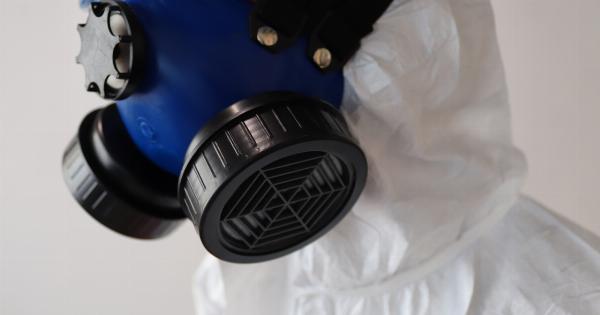The respiratory system plays a vital role in our overall health and well-being. It is responsible for the exchange of oxygen and carbon dioxide and serves as a defense mechanism against harmful airborne pathogens.
In recent years, scientists have been uncovering the intricate workings of this complex system, leading to significant advancements in understanding and treating respiratory diseases. One such breakthrough discovery involves the identification of a protective protein that has the potential to revolutionize respiratory healthcare.
Understanding the Respiratory System
Before delving into the discovery of the protective protein, it is crucial to have a basic understanding of how the respiratory system functions.
The respiratory system consists of several organs, including the nose, trachea, bronchi, and lungs, all working together to facilitate the exchange of gases.
The Role of the Protective Protein
A team of dedicated researchers recently made a groundbreaking discovery related to respiratory health.
They identified a protein, tentatively named “RespiGuard,” which acts as a protective shield against various harmful agents, including pathogens and pollutants, that enter the respiratory system. RespiGuard attaches itself to the epithelial cells lining the respiratory tract, creating a defense barrier that prevents these agents from causing harm.
Research Methodology and Findings
The research team conducted extensive studies to understand the mechanism through which RespiGuard offers protection. They conducted laboratory experiments on animal models as well as in vitro studies on human cell cultures. The results were astonishing.
The experiments revealed that RespiGuard not only prevented the entry of pathogens and pollutants but also triggered an immune response within the respiratory system.
This immune response was found to be crucial in neutralizing any harmful entities that managed to breach the protective barrier. Furthermore, RespiGuard was found to reduce inflammation and limit tissue damage caused by various respiratory diseases.
Furthermore, the researchers observed that individuals with higher levels of RespiGuard in their respiratory system exhibited a significantly lower risk of developing respiratory infections and diseases.
This finding opens up new possibilities for targeted therapies and preventive measures against a wide range of respiratory ailments.
Potential Applications of RespiGuard
The discovery of RespiGuard holds immense potential for improving respiratory healthcare. With further research and development, this protective protein could pave the way for new treatments and preventive strategies in the following areas:.
1. Treating Respiratory Infections
RespiGuard has the potential to revolutionize the treatment of respiratory infections caused by various pathogens.
By enhancing the body’s natural defense mechanisms, this protein could significantly reduce the prevalence and severity of infections like influenza, pneumonia, and bronchitis.
2. Managing Chronic Respiratory Diseases
Chronic respiratory diseases, such as asthma and chronic obstructive pulmonary disease (COPD), affect millions of people worldwide. RespiGuard has shown promising results in reducing inflammation and tissue damage associated with these conditions.
It may provide a new avenue for managing these chronic diseases and improving the quality of life for patients.
3. Enhancing Lung Health in Polluted Environments
In many parts of the world, air pollution poses a significant threat to respiratory health. RespiGuard’s protective properties can play a vital role in minimizing the detrimental effects of pollutants.
By creating a barrier against harmful particles and triggering immune responses, this protein may reduce the incidence of respiratory diseases caused by pollution.
4. Preventing Occupational Respiratory Disorders
Individuals working in professions with high exposure to respiratory hazards, such as mining or construction, often face an increased risk of developing occupational respiratory disorders.
RespiGuard can offer considerable protection to workers in these industries, safeguarding their respiratory system against harmful agents encountered in the workplace.
Conclusion
The discovery of RespiGuard as a protective protein in the respiratory system is a significant milestone in respiratory healthcare.
This breakthrough has the potential to revolutionize the treatment and prevention of respiratory infections, chronic diseases, and occupational disorders. As further research and development unfold, RespiGuard may become a cornerstone in the quest for better respiratory health for individuals worldwide.






























